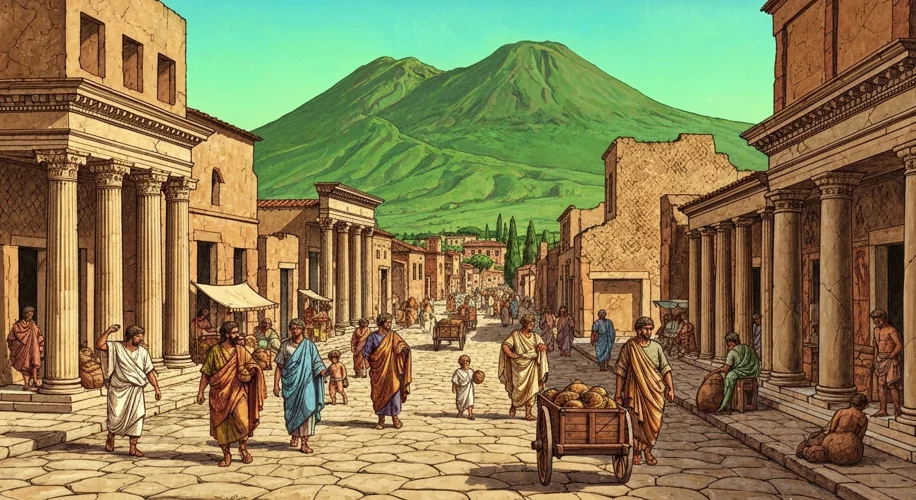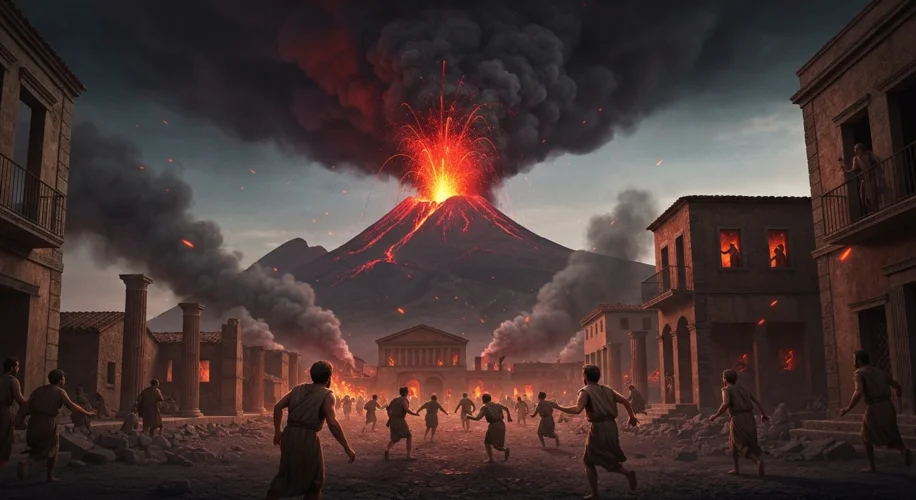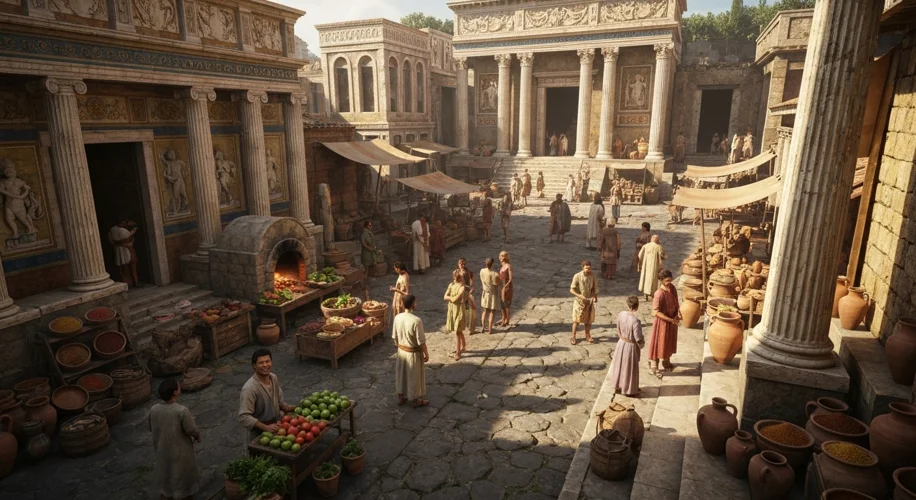The Day the Mountain Roared: Pompeii Frozen in Time
Picture this: a bustling Roman city, alive with the chatter of merchants, the clatter of chariots, and the aroma of freshly baked bread. This was Pompeii, a vibrant port city nestled at the foot of a seemingly gentle, vine-covered mountain – Mount Vesuvius. Life here, in the year 79 AD, was as ordinary as it gets. Citizens went about their daily routines, oblivious to the slumbering giant above.

A Culture of Comfort and Commerce
Pompeii was a thriving hub, a place where wealthy Romans built luxurious villas, adorned with colorful frescoes and intricate mosaics. The streets were paved, complete with raised sidewalks and stepping stones to avoid the muck. Public baths were centers of social life, and the amphitheater echoed with the cheers of crowds during gladiatorial contests. It was a city that embraced life, art, and pleasure.
The Unseen Threat
For centuries, Vesuvius had been dormant, its imposing presence a mere backdrop to the energetic life below. The Romans, pragmatic as they were, saw it as a benign feature of their landscape. Little did they know that beneath its serene facade, a cataclysm was brewing. The earth had trembled before, with a significant earthquake in 62 AD, but the resilient Pompeiians had rebuilt, perhaps too confidently.
The Fury Unleashed
Then came that fateful day, August 24th, 79 AD (though recent evidence suggests it may have been October). The air hung heavy with an unnatural stillness before the sky turned dark. Mount Vesuvius, with a deafening roar, unleashed its pent-up fury. It wasn’t a lava flow that first threatened Pompeii, but a terrifying rain of pumice stones and ash. For hours, the sky rained fire and rock, a deadly, suffocating blanket. People scrambled for safety, some fleeing towards the sea, others seeking refuge in their homes.

Those who remained or sought shelter within buildings were not spared. A surge of superheated gas and volcanic debris, known as a pyroclastic flow, swept down the mountainside at unimaginable speeds. It was a wave of destruction, instantaneous and merciless, instantly killing anyone in its path, preserving them in their final moments.
A City Preserved, A Story Told
The eruption continued for two days, burying Pompeii and the nearby city of Herculaneum under meters of ash and pumice. For centuries, the cities lay forgotten, lost to time, their stories silenced. It wasn’t until the 18th century that systematic excavations began, revealing a civilization preserved in an almost unbelievable state of detail.
The ash acted as a macabre preservative. It captured the outlines of buildings, the textures of walls, and even the spaces where bodies once lay. Plaster casts made by pouring plaster into these voids revealed the agonizing final moments of the inhabitants – a mother shielding her child, a man curled in a protective posture. These poignant figures offer a direct, visceral connection to the past, a stark reminder of the human cost of natural disasters.

Echoes Through Millennia
The discovery of Pompeii and Herculaneum revolutionized our understanding of Roman life. We see vibrant frescoes depicting mythological scenes, bustling market stalls, and intimate family moments. We find everyday objects – pottery, tools, furniture – offering insights into their economy, social structure, and domestic lives. The graffiti scrawled on walls speaks of everyday concerns, jokes, and political sentiments, bringing the ancient Romans to life in a way that dry historical texts rarely can.
Pompeii is more than just ruins; it is a time capsule. The eruption of Vesuvius, while a tragedy of immense proportions, inadvertently gifted us an unparalleled window into a lost world. It’s a powerful reminder of nature’s might and the fragility of human existence, yet also a testament to the enduring power of human stories, frozen in time for us to uncover and reflect upon.

